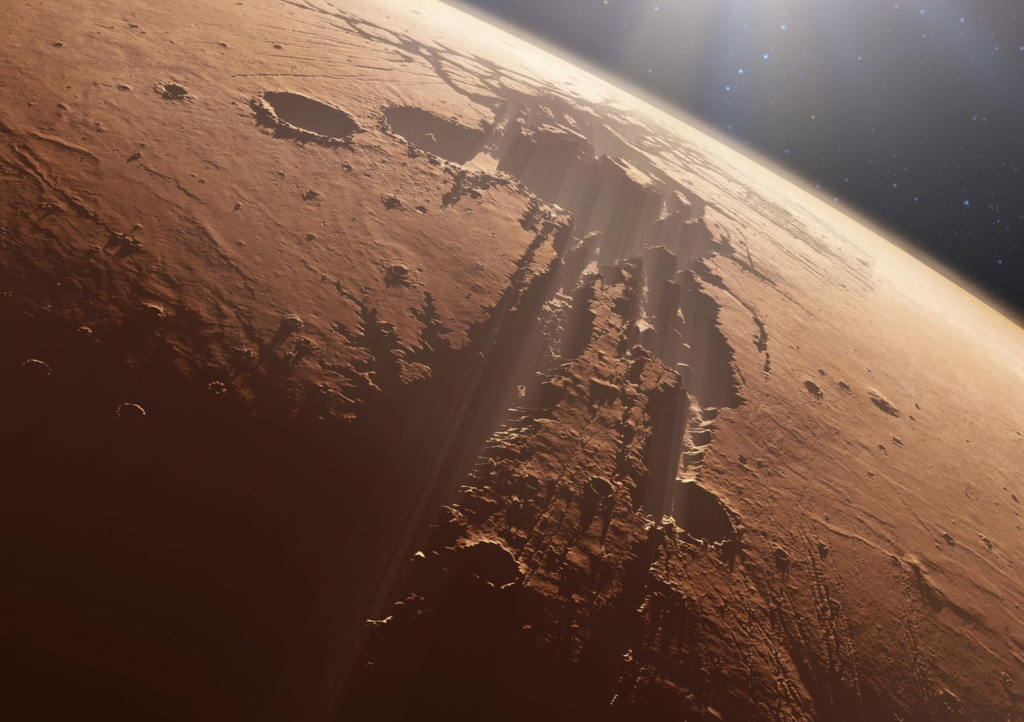NASA’s ongoing exploration of Mars and the concept of galactic settlements have captured the imagination of scientists, engineers, and the general public alike. The possibility of human colonization on Mars has moved from science fiction to a potential reality. Recently, NASA mentioned the names of five galactic settlements associated with Mars, marking a significant step in the conceptualization of human life on another planet. This article will delve into these settlements and explore what they mean for the future of space exploration.

The Push for Mars Colonization
Why Mars?
Mars has long been considered one of the most viable options for human colonization due to its relative proximity to Earth and the similarities between the two planets. While Mars is far from a perfect match for Earth, its surface conditions, atmosphere, and availability of essential resources like water ice make it a potential candidate for human settlement. NASA’s continued exploration of Mars is driven by the desire to understand the planet’s potential for supporting life and to develop the technology needed for long-term human habitation.
The Challenges of Living on Mars
- Harsh Climate: Mars has extreme temperatures, with an average of minus 80 degrees Fahrenheit, making it a hostile environment for human life. Solutions such as specialized habitats and protective technologies will be essential.
- Radiation Exposure: Mars lacks a magnetic field and thick atmosphere to shield inhabitants from cosmic and solar radiation, making radiation exposure a significant concern for long-term settlers.
- Resource Scarcity: While Mars has some accessible resources, the scarcity of crucial materials like oxygen and food means that settlers would need to rely heavily on advanced life support systems and possibly import supplies from Earth.
NASA’s Vision for Galactic Settlements
The Five Proposed Settlements
NASA’s mention of five galactic settlements associated with Mars represents a major milestone in the agency’s long-term vision for space colonization. These conceptual settlements are designed to support human life while addressing the unique challenges of living on Mars.
- Ares Station: Ares Station is envisioned as the central hub for Mars exploration. This settlement would house astronauts and scientists, serving as the primary location for research and development activities. Ares Station is planned to be located near the equator, taking advantage of the milder temperatures and access to sunlight.
- Olympus Base: Named after Mars’ tallest volcano, Olympus Base is designed to harness geothermal energy from beneath the planet’s surface. This settlement would focus on sustainable energy production, providing power for other Martian colonies while also serving as a key research site.
- Valles Colony: Situated in the massive Valles Marineris canyon, Valles Colony would be built within natural caves and crevices to protect its inhabitants from radiation. The colony’s strategic location would make it a prime site for geological research and resource extraction.
- Hellas City: Hellas City is proposed for the low-lying Hellas Basin, which has a slightly denser atmosphere than the rest of Mars. This settlement could benefit from natural protection against cosmic radiation and is envisioned as a key location for agriculture and food production.
- Elysium Outpost: Located near the Elysium volcanic region, Elysium Outpost would serve as an industrial hub, focusing on mining and material extraction. The outpost would be crucial in providing the raw materials necessary for building and expanding Martian infrastructure.
The Purpose of These Settlements
Each of these proposed settlements has a specific function that supports the overall goal of sustainable human habitation on Mars. They collectively represent NASA’s strategy of creating a network of interconnected bases, each contributing to the survival and development of Martian society.
The Role of Technology in Galactic Settlements
Advanced Life Support Systems
One of the most critical aspects of galactic settlements is the development of life support systems capable of maintaining human life in Mars’ hostile environment. NASA is investing in closed-loop systems that recycle water, oxygen, and waste, reducing the need for resupply missions from Earth.
AI and Robotics
AI and robotics will play an integral role in the construction and maintenance of these settlements. Automated systems will be responsible for tasks such as mining, habitat construction, and routine maintenance, reducing the physical strain on human settlers and ensuring efficient operation.
Space Agriculture
Sustainable food production is essential for long-term survival on Mars. NASA is researching ways to grow crops in Martian soil, experimenting with hydroponic and aeroponic systems that could one day provide settlers with a reliable food source.
Conclusion: A New Frontier for Humanity
NASA’s mention of five galactic settlements associated with Mars highlights the agency’s ambitious plans for the future of human space exploration. While many challenges remain, the development of these settlements represents a critical step toward realizing the dream of colonizing another planet. As technology advances and our understanding of Mars deepens, the possibility of a human presence on Mars becomes increasingly tangible. The next few decades promise to be a transformative period for space exploration, with Mars at the center of humanity’s quest to become a multi-planetary species.
NASA’s vision for galactic settlements on Mars represents a bold new chapter in the story of human exploration. With advanced technology and a clear strategy, humanity is on the verge of expanding its presence beyond Earth, turning the dream of living on another planet into reality.
